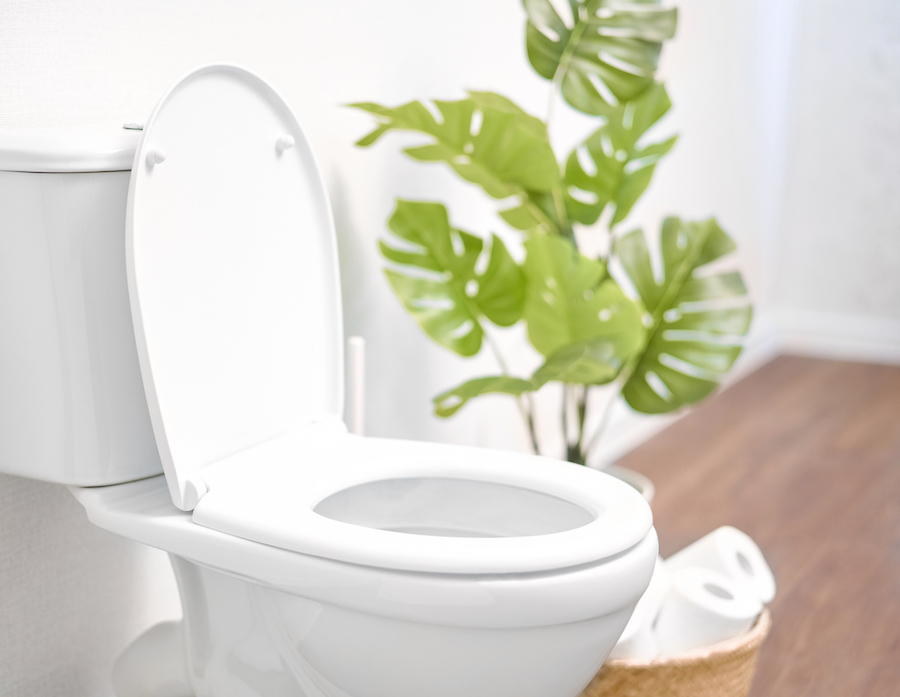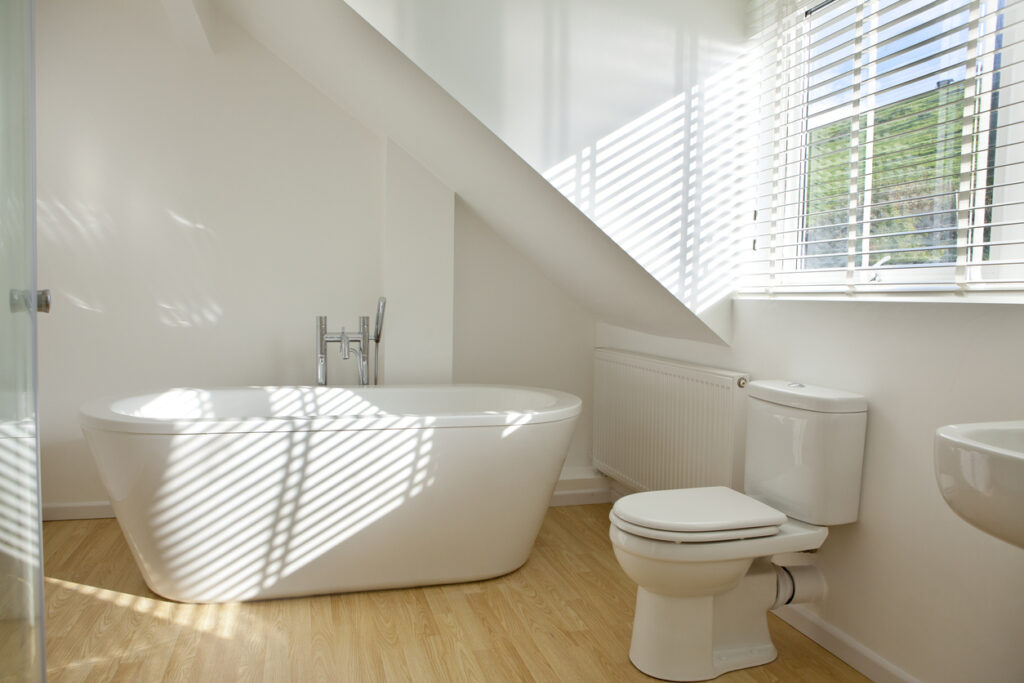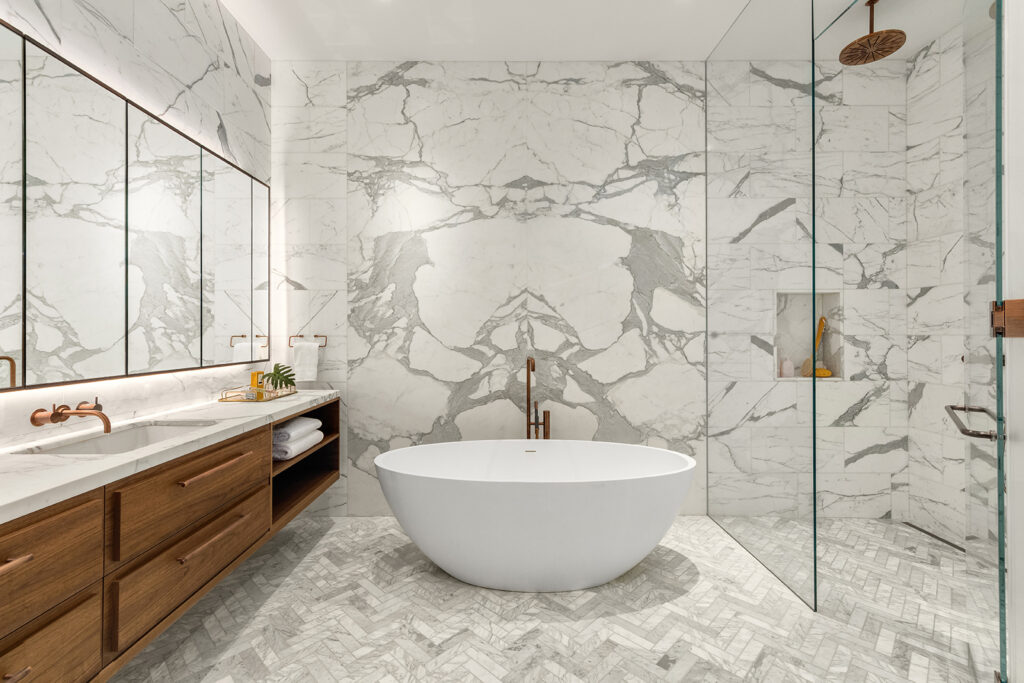
One-Piece vs Two Piece Toilet – Pros and Cons- 2025 Expert Guide
When upgrading your bathroom, one of the most important—and often overlooked—decisions is choosing between a one-piece or two-piece toilet. While
When upgrading your bathroom, one of the most important—and often overlooked—decisions is choosing between a one-piece or two-piece toilet. While both serve the same core function, they differ significantly in design, cost, ease of cleaning, and installation. A one-piece toilet offers a sleek, modern look and low-maintenance design, whereas a two-piece toilet is more traditional, budget-friendly, and widely available. In this guide, we’ll break down the key differences, pros, and cons of each style to help you decide which option best fits your bathroom and lifestyle.
Before diving into the pros and cons of each, let’s take a closer look at the main differences between one-piece and two-piece toilets to understand how they compare in form, function, and overall convenience..

When deciding between a one-piece and two-piece toilet, it’s helpful to look at their core differences side by side. While both options serve the same function, they vary in appearance, cost, maintenance, and installation. The table below offers a quick comparison to help you choose the best fit for your space, budget, and long-term needs.
| Feature | One-Piece Toilet | Two-Piece Toilet |
| Design | Seamless, tank and bowl fused into one unit | Separate tank and bowl joined during installation |
| Appearance | Sleek, modern, compact | More traditional and segmented |
| Ease of Cleaning | Easier to clean, fewer crevices | Harder to clean, seam between tank and bowl |
| Installation | Heavier, may require two people | Easier to maneuver, more DIY-friendly |
| Cost | Typically more expensive | Generally more affordable |
| Durability | Fewer parts = fewer leak points | Gasket between tank and bowl may need maintenance |
| Availability | Less common, fewer models and styles | Widely available in stores with many options |
| Features | Often includes upgrades like soft-close seats | Usually sold with standard features |
| Space Efficiency | Compact, ideal for small bathrooms | Slightly larger footprint |
| Part Replacement | Full unit must be replaced if damaged | Tank or bowl can be replaced separately |
While the comparison table provides a helpful snapshot, understanding the full picture requires a closer look at each toilet type on its own. Let’s start with the one-piece toilet—what it is, how it works, and what makes it a popular choice in many modern bathrooms.
A one-piece toilet is a type in which the tank and bowl are fused into a single, seamless unit. Unlike two-piece toilets—where the tank and bowl are manufactured separately and joined during installation—one-piece toilets are cast as one solid piece of ceramic or porcelain. This integrated design gives the one-piece toilet a compact and modern appearance while minimizing potential leaks between components.
Key Characteristics of a One-Piece Toilet
One-piece toilets are known for their streamlined look, lower profile, and space-saving design. They often feature a skirted base (which hides the trapway for easier cleaning), soft-close seats, and more advanced flushing technology than standard models. Because of their compact build, one-piece toilets are popular for modern homes, upscale bathrooms, and powder rooms where space and aesthetics matter.
Key traits include:

Despite its unified design, a one-piece toilet contains all the essential components found in traditional toilets, just in a consolidated form:
Now that you understand the components and structure of a one-piece toilet, it’s important to weigh the practical advantages and potential drawbacks before making your decision.
The table below summarizes the key pros and cons of a one-piece toilet. This side-by-side comparison can help you quickly assess whether it’s the right fit for your bathroom needs and renovation goals.
| Pros | Cons |
| Easier to clean | Higher upfront cost |
| Sleek, modern look | Heavier and harder to move |
| Space-saving design | Fewer style and size options |
| More durable (fewer leak points) | Repairs can be more complicated |
| Pre-assembled for faster install | Greater risk of damage during shipping |
| No tank-to-bowl gasket issues | May not fit older or unique bathroom setups |
| Comes with modern features | Not as DIY-friendly |
While the table provides a quick overview, let’s examine each pro and con in more detail to better understand how a one-piece toilet may impact your bathroom experience, maintenance needs, and overall budget.
Below are the top advantages of choosing a one-piece toilet, from easy cleaning to modern aesthetics.
One-piece toilets are significantly easier to clean than two-piece models because there are no gaps or seams between the tank and the bowl. Dirt, mold, and bacteria have fewer places to hide, making routine bathroom cleaning faster and more hygienic. The smooth, uninterrupted surface is ideal for households that prioritize cleanliness.
The integrated design of a one-piece toilet gives it a sleek, minimalist appearance that fits beautifully in contemporary bathrooms. The uniform shape offers visual appeal and elevates the overall bathroom aesthetic. It’s especially favored in high-end renovations or designer bathroom setups.
Thanks to the compact tank-and-bowl construction, one-piece toilets typically have a smaller footprint than two-piece models. This makes them a great choice for powder rooms or bathrooms with limited space. Their low-profile design also helps maximize visual openness in tight layouts.
Without the junction between the tank and the bowl, there’s no risk of leaks from a deteriorating tank-to-bowl gasket. The single-piece build results in fewer moving parts and structural weaknesses. Over time, this can contribute to a longer lifespan and fewer maintenance issues.
One-piece toilets come as a complete unit, which means there’s no need to connect the tank to the bowl during installation. This can save time for professionals and reduce the risk of misalignment or improper sealing. However, due to the weight, a second person may still be required.
Since the tank and bowl are fused together, there’s no rubber gasket in between that can wear out or cause leaks. This common issue in two-piece toilets is completely avoided, adding to the reliability of the unit. It also reduces future maintenance costs.
Many one-piece toilets come with built-in upgrades such as soft-close seats, water-saving dual-flush systems, or skirted bases that hide plumbing lines. These modern features offer additional value and comfort without requiring separate purchases. It’s a plug-and-play option for a more refined bathroom experience.
Despite its benefits, a one-piece toilet also comes with some drawbacks you’ll want to consider before purchasing.
One-piece toilets are generally more expensive than their two-piece counterparts, often by several hundred dollars. The higher price reflects both the manufacturing complexity and the premium look. For budget-conscious buyers, this can be a significant drawback.
Because the tank and bowl are fused into one solid unit, one-piece toilets are heavier and bulkier to transport. This can make maneuvering the toilet during delivery and installation more difficult, especially in tight spaces or multi-story homes. It often requires two people to safely install.
While sleek, one-piece toilets are not as widely available in different styles, colors, or heights compared to two-piece models. This may limit your ability to match specific design themes or accommodate users with special accessibility needs. Customization options are also fewer.
If a one-piece toilet develops a crack or defect in the tank, you may need to replace the entire unit rather than a single component. Accessing internal parts for repairs or upgrades can also be more complex. This increases the long-term cost of ownership in some scenarios.
Because the toilet ships as a single piece, it’s more susceptible to breakage in transit. A damaged tank or bowl often means replacing the entire unit, unlike two-piece toilets where only one section might need swapping. It’s important to inspect the toilet carefully upon delivery.
Some one-piece toilets are built with non-standard dimensions or unique base designs. This could lead to compatibility issues with older bathrooms or non-standard plumbing setups. Always double-check the rough-in measurement before purchasing.
Due to its weight and bulk, installing a one-piece toilet yourself can be a challenge. It’s not as simple as lifting and placing a two-piece system in stages. If you’re not experienced with toilet installation, you may need to hire a plumber—adding to the total project cost.
Now that we’ve covered the features and benefits of a one-piece toilet, let’s take a closer look at how a two-piece toilet compares in design, functionality, and overall value.
A two-piece toilet is a traditional toilet design consisting of a separate tank and bowl that are joined together during installation. This configuration has been the industry standard for decades and is widely available in both residential and commercial settings. The detachable tank makes transporting, handling, and replacing components easier.
Two-piece toilets are known for their versatility, affordability, and classic look. Because the tank and bowl are manufactured separately, they’re easier to ship and carry, especially in tight spaces or older homes. You’ll also find a broader range of styles, sizes, and price points across two-piece toilet models.
Notable traits include:
Though similar in function to one-piece models, two-piece toilets feature a modular design. Here’s what they include:
Two-Piece Toilet: Pros and Cons
Below are the key advantages of a two-piece toilet, from cost savings to easier maintenance access.
Two-piece toilets are usually more affordable than one-piece models, both in terms of unit price and availability. This makes them a popular choice for budget-conscious remodels or large-scale property installations. You can often find models starting at lower price points without sacrificing functionality.
Because the tank and bowl are separate, two-piece toilets are lighter and easier to move into place. This is especially helpful for DIY installations or navigating tight hallways and staircases. It also allows for staggered or solo installation if needed.
Two-piece toilets come in a wider range of shapes, sizes, and designs. Whether you need a round bowl, elongated seat, or ADA-compliant height, there’s likely a two-piece model to fit. This flexibility makes it easier to match your bathroom’s specific needs.
If the tank cracks or fails, you can often replace just the tank without buying an entirely new toilet. This modularity can help reduce repair and replacement costs over time. It also makes sourcing replacement parts simpler and more affordable.
Due to their popularity, two-piece toilets are stocked in most major hardware and home improvement stores. This means shorter lead times, more in-stock options, and greater accessibility for last-minute projects. It’s also easier to find compatible parts when needed.
The separated tank and bowl make it easier to carry a two-piece toilet up stairs or through narrow doorways. This is a practical advantage in multi-story homes or apartments with tight access points. It also reduces the risk of damage during installation.
Most plumbers are highly experienced with installing and repairing two-piece toilets, which may result in faster and more affordable service. Their common design also makes them a safe bet for resale value or rental properties. Familiarity can translate into fewer surprises during installation or repair.
Despite being a reliable option, two-piece toilets have a few notable drawbacks that may affect long-term satisfaction.
The seam between the tank and bowl creates extra nooks where dirt, dust, and bacteria can collect. Cleaning around the tank bolts and gasket can also be tricky. Over time, these hidden areas can become harder to maintain.
The connection between the tank and bowl involves a gasket that can degrade over time. This introduces the potential for leaks, especially in older models or with heavy use. Periodic maintenance or gasket replacement may be required.
Compared to one-piece toilets, two-piece models tend to look more segmented and less streamlined. This can impact the visual appeal of modern or minimalist bathrooms. The exposed trapway and tank seams are less aesthetically refined.
Installing a two-piece toilet involves connecting the tank and bowl securely with bolts and a gasket. This step can add a bit more time and complexity, especially if parts don’t align perfectly. It may also require adjustments to ensure a tight seal.
Most two-piece toilets don’t include high-end features like soft-close seats, dual-flush systems, or concealed trapways. You’ll typically have to purchase upgrades separately or install them later. This can increase the overall project cost.
Two-piece toilets generally have a taller tank and a slightly larger footprint than one-piece models. In small bathrooms, this can affect spacing and overall layout. If space efficiency is a priority, it may not be the best option.
Because they consist of two joined parts, some users feel that two-piece toilets are less solid or stable. While performance is often identical, the modular build may lack the seamless feel of a one-piece toilet. It’s more of a perception issue, but still worth noting.
| Pros | Cons |
| Lower upfront cost | More difficult to clean |
| Easier to transport and install | Higher risk of leaks at the connection point |
| Wider range of styles and sizes | Less sleek visual profile |
| Individual part replacement possible | Installation is slightly more complex |
| Widely available | Often lacks premium features |
| Easier for upstairs access | Less compact in smaller bathrooms |
| Familiarity with plumbing pros | May feel less solid or durable |

Both one-piece and two-piece toilets have their own distinct advantages and potential drawbacks, and the best choice ultimately comes down to your bathroom layout, budget, and design preferences. If you value a modern look, easy maintenance, and compact design, a one-piece toilet may be worth the investment. On the other hand, if affordability, flexibility, and ease of part replacement are your priorities, a two-piece toilet is a reliable and practical option. By weighing the pros and cons of each style, you can make a confident decision that suits your space and long-term needs.

Eric is the founder and president of Badeloft USA. He has been the president of Badeloft’s US division for over ten years and oversees all marketing and branding aspects of Badeloftusa.com.
His expertise lies in small business development, sales, and home and bathroom industry trends and information.
Contact us with any business related inquiries.

Free material samples and tub templates

When upgrading your bathroom, one of the most important—and often overlooked—decisions is choosing between a one-piece or two-piece toilet. While

Small details, including what you place on the floor, can make a big difference when setting up or upgrading your

Plumbing traps may seem like small components, but they are critical in keeping your home safe and odor-free. Two of
When shopping for new bath linens, the difference between a bath towel and a bath sheet can feel subtle, but
Request your free material sample below. By submitting, you agree to receive occasional product updates and offers from Badeloft. Unsubscribe anytime.
"*" indicates required fields
"*" indicates required fields
"*" indicates required fields